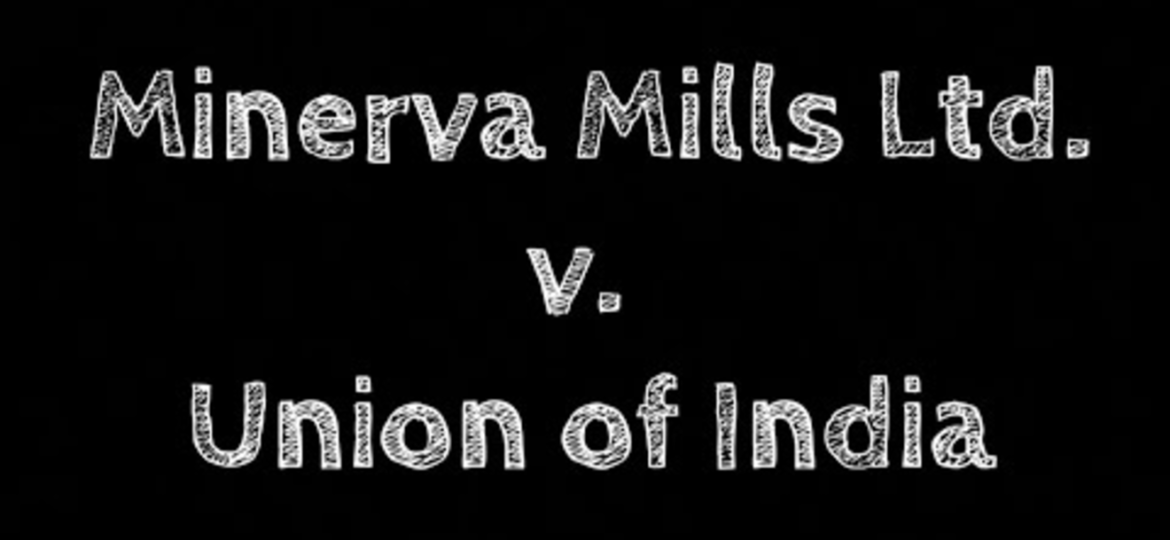
FACTS IN SHORT
The Petitioner was Company owning textile undertaking, which was subsequently nationalized and brought over by the Central Government under the Sick Textile Undertakings (Nationalisation) Act, 1974. The Petitioners contended that Section 4 and 55 of 42nd Amendment Act, 1976 to the Constitution of India were constitutional invalid. Section 4 substituted the words in Article 31-C as ‘all or any of the principles laid down partially IV’ which earlier was restricted to only Article 39; which thereby took away a review of any law on any alleged violation of Fundamental Rights guaranteed by Article 14 and 19 if it supposedly seems to further the principles of the Directive Principles of State Policy. Section 55 inserted clause (4) and (5) in Article 368 which caught in a frenzy review from any amendment made to the Constitution by legislature including Part III (Fundamental Rights) of the Constitution. Relying on the choice in Keshavananda Bharati v. the State of Kerala (AIR 1973 SC 1461) that ‘Constitution is heritage, hence don’t destroy its identity’, it had been contended by the petitioners that since Constitution itself provided limited powers of the amendment, Parliament couldn’t, under the exercise of that limited power, enlarge that limited power to absolute power and hence Section 55 was unconstitutional. Also, regarding Section 4 it had been argued that though Directive Principles were mandatory as the ends of the state, they might be achieved only by permissible means i.e. by reading them in harmony to Fundamental Rights but Section 4, which made the elemental Rights subordinate to the
Directive Principles weren’t agreeable by the structure of the Constitution. Defending the impugned Sections, the Attorney General argued that when a law was enacted to further social and economic justice as advocated under the Directive Principles, it could never cause any injustice or violate any fundamental right for that matter. Moreover, Section 4 didn’t snatch away review totally, rather questions like reasonable and actual nexus of the law with the essence of Directive Principles alleged to be furthered, etc. would still be exposed to judicial scrutiny and hence isn’t unconstitutional.
JUDGEMENT
Accepting the challenges made, the Court declared both Section 4 and 55 as unconstitutional. The Court observed that by virtue of Section 55, Parliament was doing something in the garb of an authority that wasn’t permissible by the mandate of the Constitution. Also, Section 4 attempted to legitimize all future laws hitting onto fundamental rights, yet the judiciary would be paralyzed to the extent of only drawing out and stretching the law to satisfy the nexus with principles of Directive Principles.
CONCLUSION
Due to this decision, while the text of Constitution of India bears the words ‘principles of Part IV’ in Article 31-C, an equivalent has been declared invalid by this case. The case therefore shows the extent the judiciary would enter order the preserve the inherent character (basic feature) of the Constitution. Further within the case of Tinsukhia Electric Supply Co. v. State of Assam (AIR 1990 SC 123) the Court read the ‘doctrine of reasonable nexus’ to enunciate that it had been not that each statute which has been enacted with the dominant object of giving effect to the Directive Principles is entitled to protection, but only those statutes which are basically and essentially necessary for giving effect to Directive Principles are protected.
Author(s) Name: Kanak Patidar (Symbiosis Law School, Nagpur)

